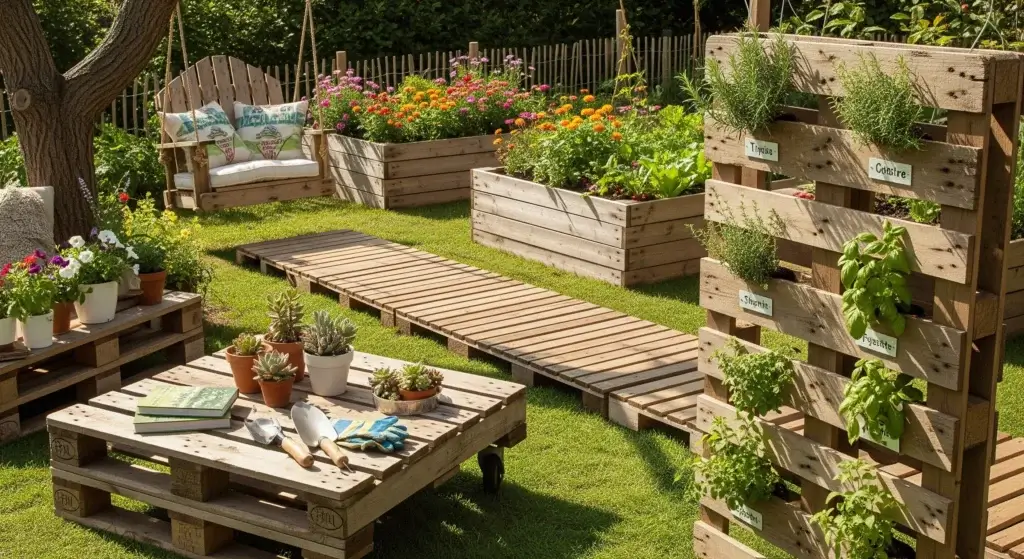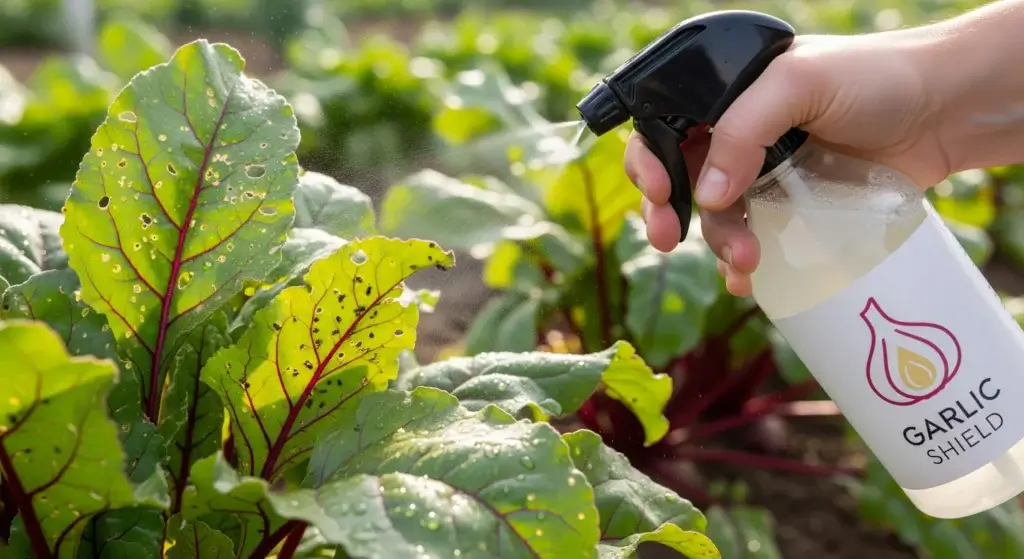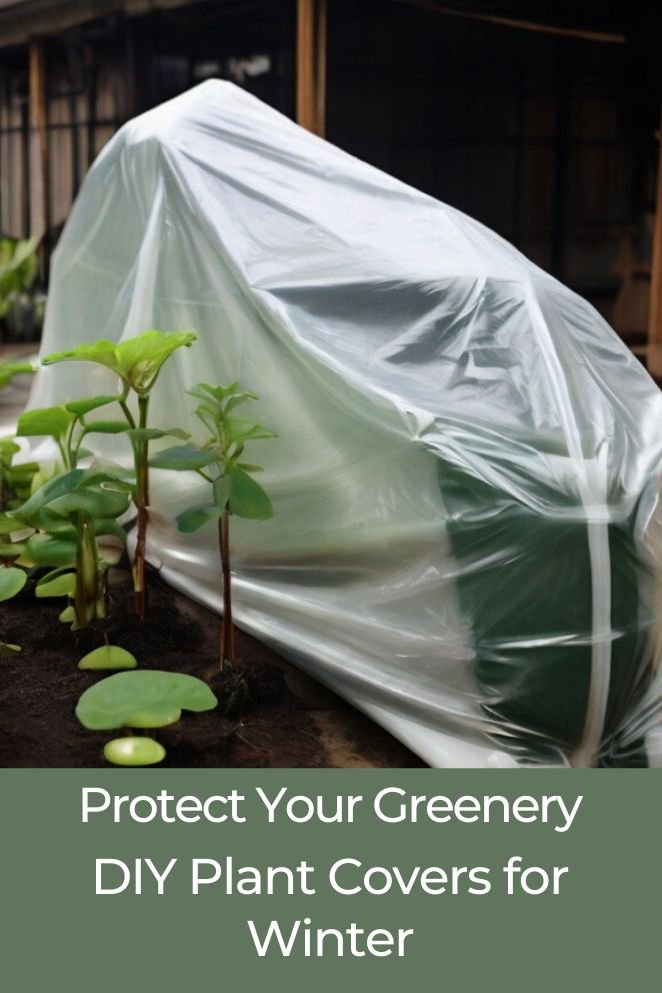
As winter approaches, it’s essential to protect your plants from the harsh weather conditions.
Choosing the right cover for your plants depends on various factors, including the plant type, climate severity, and the desired level of coverage.
In this article, we will explore DIY plant cover ideas for winter, along with the materials needed and step-by-step guides to help you safeguard your plants during the cold months.
How to Choose the Right Cover?
Plant type
Different plants have varying levels of hardiness.
It’s important to consider the specific needs of each plant when selecting a cover.
For example, tender bulb flowers, annual plants, and certain vegetables may require more insulation and protection during winter.
- Read also: DIY Potato Planter Box
- Read also: DIY Garden Trellis Arch
Climate severity
The severity of the winter climate in your region will influence the type of cover you need.
Areas with extremely cold temperatures and heavy snowfall may require more robust covers, while milder climates may necessitate lighter protection.
Desired level of coverage
Consider the level of coverage you want to provide for your plants.
Some covers, such as fabric frost shields, offer a higher degree of insulation, while others, like simple raised box frames, provide basic protection.
Understanding your plants’ needs will help you determine the most suitable cover.
DIY Plant Covers for Winter Ideas
Fabric Frostshield
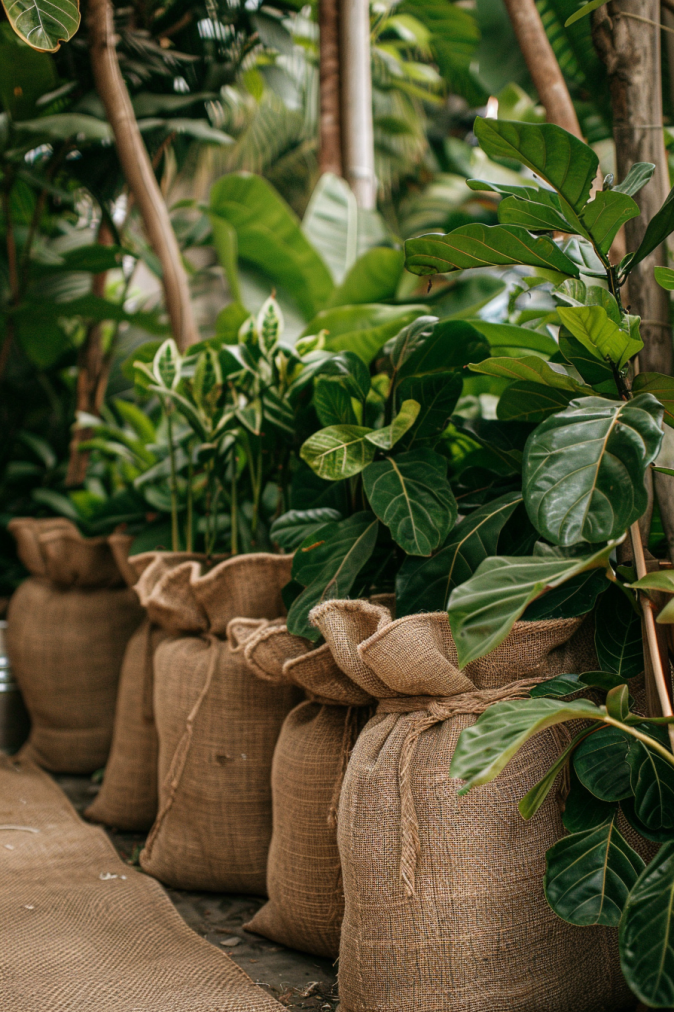
Crafting a fabric frost shield is a practical and cost-effective way to safeguard your plants from chilly temperatures and potential frost damage.
Materials needed
- Burlap
- Polyethylene
- Polypropylene
- Fleece
Step-by-step guide
Choose the appropriate fabric
Assess the insulation needs of your plants based on their type and the severity of the expected cold temperatures.
Burlap is suitable for moderate conditions, while polyethylene, polypropylene, or fleece may be more appropriate for colder climates.
Cut the fabric to the desired size
Measure and cut the selected fabric to the appropriate size, ensuring it fully covers the plants.
Leave enough room for the fabric to drape over the edges without touching the foliage.
Secure the fabric in place
To prevent the fabric from being displaced by wind, secure it in place using stakes or weights.
Use gardening stakes to anchor the fabric around the plant base, or place rocks or other weights along the edges.
Ensure a snug fit to maximize insulation.
Cloches & Mini Greenhouses

Cloches and mini greenhouses are effective tools for providing individualized protection to your plants, extending the growing season, and shielding delicate seedlings from adverse weather conditions.
Materials needed
- Glass or plastic domes
- Wooden or metal frames
- Hinges (for mini greenhouses)
Step-by-step guide
Construct the wooden or metal frames
Determine the dimensions of your cloches or mini greenhouses based on the size of the plants you intend to protect.
Cut the wooden or metal materials to the desired lengths and assemble them into frames.
Ensure the frames are stable and securely put together.
Attach the glass or plastic domes
Affix the glass or plastic domes to the frames, creating a protective enclosure for your plants.
Secure the domes firmly, ensuring they cover the entire frame and create a snug environment for your plants to thrive.
Install hinges on the mini greenhouses
If you opted for mini-greenhouses, install hinges along one side of the frame.
This allows for easy lifting of the glass or plastic dome, providing access to your plants and enabling ventilation.
Ensure the hinges are securely attached for durability.
Hoop Row Cover

A hoop row cover is a versatile and budget-friendly solution to shield your plants from various environmental elements, such as frost, insects, or excessive sunlight.
Materials needed
- PVC or metal hoops
- Row cover fabric
Step-by-step guide
Insert the hoops into the ground
Determine the spacing and positioning of your plants, and insert the PVC or metal hoops into the ground to create a tunnel-like structure over the designated area.
The height of the hoops should accommodate the anticipated size of your plants.
Drape the row cover fabric over the hoops
Unroll the row cover fabric over the hoops, creating a protective tunnel.
Ensure the fabric fully covers the hoops and extends to the ground on both sides.
This creates a sealed environment that shields your plants from external elements.
Secure the row cover fabric in place
Anchor the row cover fabric to the ground using soil, rocks, or other weights along the edges.
Alternatively, you can secure the fabric to the hoops using clips or ties.
This ensures that the fabric remains in place during windy conditions while maintaining a snug fit over your plants.
Tunnel Row Cover

A tunnel row cover serves as an effective and adaptable solution to shield your plants from various environmental elements, such as frost, insects, or excessive sunlight.
Materials needed
- Wire or PVC pipes
- Row cover fabric
Step-by-step guide
Create a framework using the wire or PVC pipes
Determine the desired length and height of your protective tunnel and insert wire or PVC pipes into the ground to create a framework.
Space the pipes evenly based on the layout of your plants, ensuring the structure forms an arched tunnel over the designated area.
Cover the framework with the row cover fabric
Unroll the row cover fabric over the wire or PVC pipe framework, allowing it to drape over and cover the entire tunnel.
Ensure the fabric extends to the ground on both sides to create a sealed environment that protects your plants.
Secure the row cover fabric at the edges
Anchor the row cover fabric to the ground using soil, rocks, or other weights along the edges.
Alternatively, you can secure the fabric to the framework using clips or ties.
This prevents the fabric from being displaced by wind and maintains a secure fit over your plants.
Simple Raised Box Frame
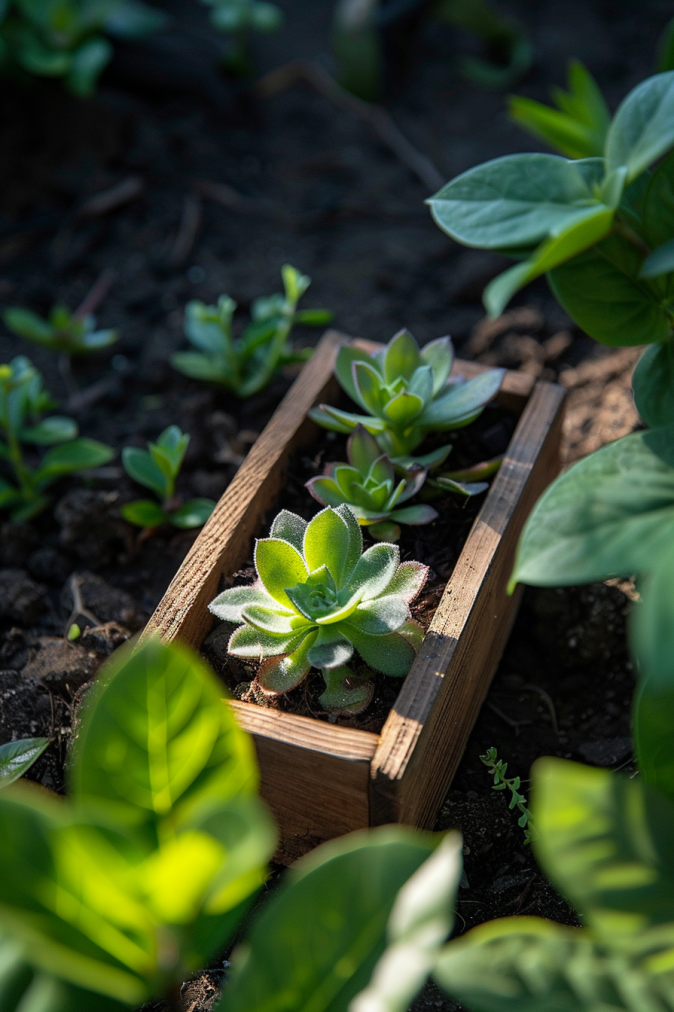
Creating a raised box frame with clear plastic sheeting offers a straightforward yet effective method to shield your plants from adverse weather conditions.
Materials needed
- Wood or metal
- Clear plastic sheeting
Step-by-step guide
Construct a raised box frame
Determine the dimensions of your raised box frame based on the layout of your plants.
Cut the wood or metal materials to the desired lengths and assemble them into a rectangular or square frame.
Ensure the corners are securely connected to form a stable structure that fits over your plants.
Cover the frame with clear plastic sheeting
Unroll the clear plastic sheeting over the constructed frame, allowing it to drape over and cover the entire box.
Ensure the plastic sheeting extends to the ground on all sides, creating a sealed environment that protects your plants from external elements.
Secure the plastic sheeting in place
Anchor the clear plastic sheeting to the frame using nails, staples, or weather-resistant tape.
Ensure a secure attachment to prevent the plastic from being displaced by wind or other environmental factors.
The goal is to maintain a snug fit over your plants.
- Read also: How to Build a DIY Bean Trellis
- Read also: DIY Asparagus Bed
Conclusion
Ensuring the well-being of your plants throughout the winter is essential for their survival.
Selecting an appropriate cover and applying do-it-yourself plant cover ideas can guarantee the health and prosperity of your plants, even in the chilliest months.
FAQs
Tender bulb flowers may benefit from fabric frost shields, such as fleece, to provide the necessary insulation and protection from the cold.
DIY plant covers can be cost-effective, as they allow you to customize the covers based on your specific needs and the size of your garden. Using materials such as burlap, polyethylene, and polypropylene can offer an affordable alternative to pre-made covers.
Covers such as tunnel row covers and simple raised box frames with clear plastic sheeting can help protect plants from heavy snowfall by providing a sturdy and insulated shelter.


